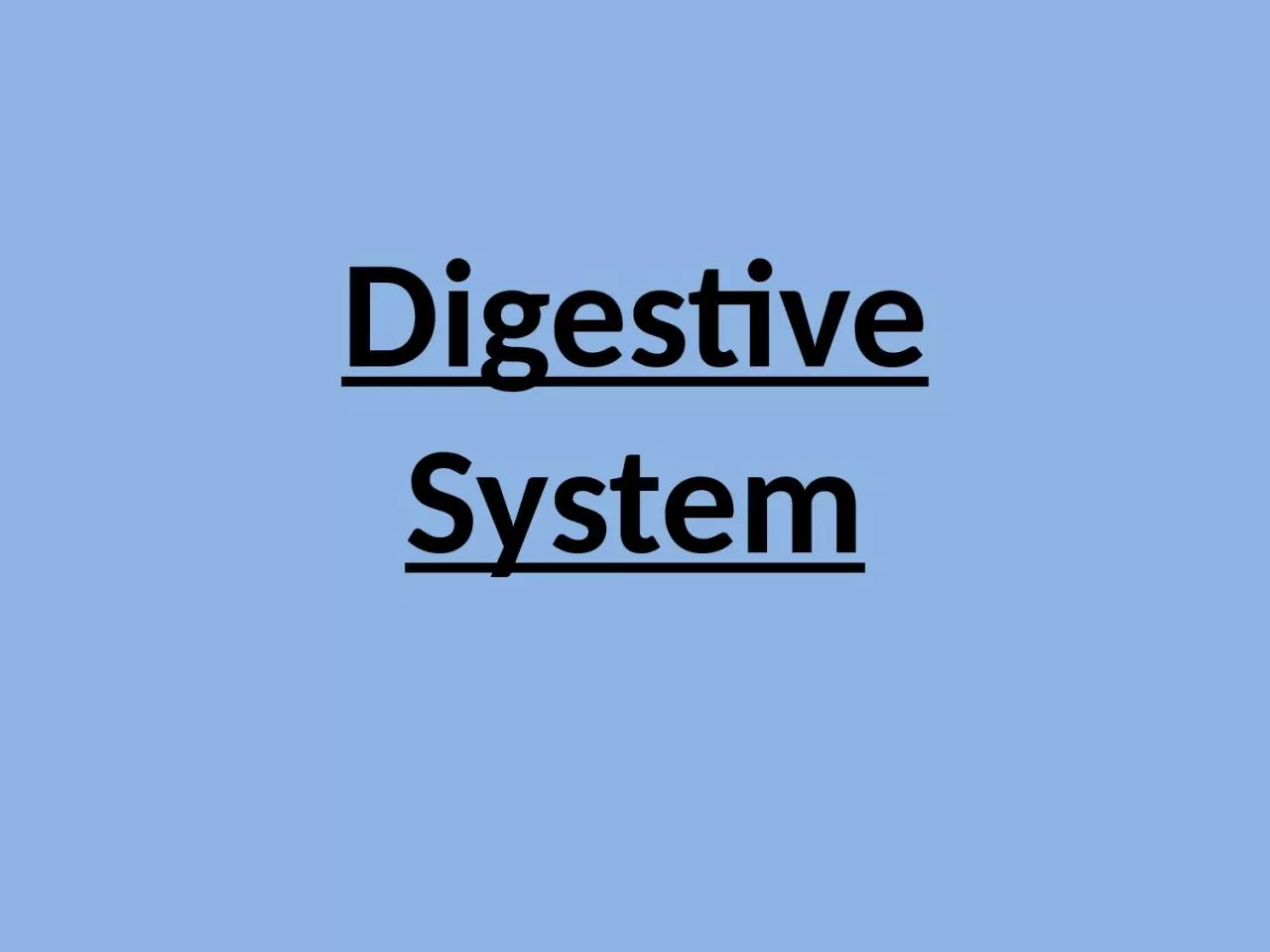

Phases Include Ingestion Movement Mechanical and Chemical Digestion Absorption Elimination Digestion Types Mechanical physical Chew Tear Grind Mash Mix Chemical Enzymatic reactions to improve digestion of ID: 1043501
Download Presentation The PPT/PDF document "Digestive System Digestion" is the property of its rightful owner. Permission is granted to download and print the materials on this web site for personal, non-commercial use only, and to display it on your personal computer provided you do not modify the materials and that you retain all copyright notices contained in the materials. By downloading content from our website, you accept the terms of this agreement.
1. Digestive System
2. DigestionPhases IncludeIngestionMovementMechanical and Chemical DigestionAbsorptionElimination
3. DigestionTypesMechanical (physical)ChewTearGrindMashMixChemicalEnzymatic reactions to improve digestion of CarbohydratesProteinsLipids
4. Digestive System OrganizationGastrointestinal (Gl) tractTube within a tubeDirect link/path between organsStructuresMouthPharynxEsophagusStomachSmall intestineLarge IntestineRectum4
5. MouthTeeth mechanically break down food into small pieces. Tongue mixes food with saliva (contains amylase, which helps break down starch).Epiglottis is a flap-like structure at the back of the throat that closes over the trachea preventing food from entering it. It is located in the Pharynx.
6. EsophagusApproximately 20 cm long.Functions include:Secrete mucusMoves food from the throat to the stomach using muscle movement called peristalsisIf acid from the stomach gets in here that’s heartburn. Mouth, Pharynx and Esophagus Video
7. Stomach7J-shaped muscular bag that stores the food you eat, breaks it down into tiny pieces.Mixes food with Digestive Juices that contain enzymes to break down Proteins and Lipids.Acid (HCl) in the stomach Kills Bacteria.Food found in the stomach is called Chyme.
8. Small IntestineSmall intestines are roughly 7 meters longLining of intestine walls has finger-like projections called villi, to increase surface area.The villi are covered in microvilli which further increases surface area for absorption.8Crash Course Review
9. Small IntestineNutrients from the food pass into the bloodstream through the small intestine walls.Absorbs:80% ingested waterVitaminsMineralsCarbohydratesProteinsLipidsSecretes digestive enzymes9
10. Large IntestineAbout 1.5 meters longAccepts what small intestines don’t absorbRectum (short term storage which holds feces before it is expelled).
11. Large IntestineFunctionsBacterial digestionFerment carbohydrates Absorbs more water Concentrate wastes
12. Accessory Organs The GlandsNot part of the path of food, but play a critical role.Include: Liver, gall bladder, and pancreas
13. LiverDirectly affects digestion by producing bileBile helps digest fatfilters out toxins and waste including drugs and alcohol and poisons.13
14. Gall BladderStores bile from the liver, releases it into the small intestine.Fatty diets can cause gallstones
15. PancreasProduces digestive enzymes to digest fats, carbohydrates and proteinsRegulates blood sugar by producing insulinWeb Page Reinforcement Video
16. THANK YOU